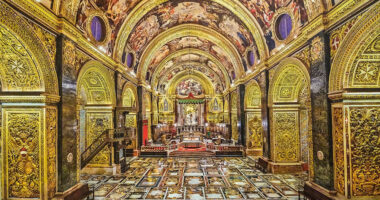The Battle of Passchendaele, also known as The Third Battle of Ypres in Belgium, was a battle of the First World War from 31 July to 6 November 1917. This battle involved some of the heaviest fighting in history. The four-month battle involved more than 420,000 casualties, and the heavy artillery bombardments resulted in horrific casualties.
Woman who sculpted WWI veterans’ faces had a hidden talent, her art featured in a new exhibition.
In 1917, the United States entered World War I, a war against Germany’s army of the Kaiser. As the United States entered the war, the country faced mounting casualties from battles in Europe, and a shortage of doctors and nurses to treat wounded American soldiers. The U.S. National Library of Medicine’s online database credits a Dr. George Eastman with making a profound contribution to the war effort by using his skills as a medical sculptor to redesign prosthetic faces for injured U.S. soldiers.
The horrors of large-caliber machine guns and artillery combat ushered in a new era of horrible fatalities and catastrophic injuries as the globe and its troops went over the top and straight into mechanized warfare.
Eight million soldiers died in World War I, with another 21 million injured. According to a 2011 study in the British Journal Social History of Medicine, an estimated 60,500 British troops sustained head or eye injuries. There’s little question that the numbers of French and German war fatalities were comparable.
The maiming of a generation of men left many with severe psychological scars in addition to physical deformity. “The impact on a guy who must go through life as an object of terror to himself as well as to others is beyond description,” stated Dr. Fred Albee, an American surgeon practicing in France. Feeling like a stranger to yourself must be absolute hell.”
Some troops were able to face themselves and the world again thanks to Anna Coleman Ladd, an American socialite and artist who became a Red Cross volunteer.
Ladd was sent to France by her husband, who was assigned to head the American Red Cross Children’s Bureau in Toul during the war. She used her skills as a sculptor — she specialized in ornamental fountains — to open the Studio for Portrait Masks in Paris in late 1917.
Ladd was inspired by British artist Francis Derwent Wood, who began creating masks for maimed British troops in March 1916, and wondered whether she might do anything similar in France.
Only so much could be done to restore broken jaws and missing noses, lips, and eyes when cosmetic surgery was still in its infancy.
According to a 1919 report from Ladd’s studio, “one guy who came to us had been injured two and a half years earlier and had never been home.” “He didn’t want his mother to see how terrible he looked,” says the narrator.
Patients who came to Ladd’s studio were given unrestricted attention and care. A single mask made by Ladd took a month to complete.
According to the Smithsonian Magazine, “the mask itself would be fashioned of galvanized copper one thirty-second of an inch thick — or, as a woman visitor to Ladd’s workshop observed, ‘the thinness of a visiting card.’” “The mask weighed between four and nine ounces and was usually kept on by eyeglasses, depending on whether it covered the whole face or just the upper or lower half, as was frequently the case.”
Ladd, who referred to the guys as her “brave faceless ones,” used pre-injury photographs to model her plaster cast as nearly as possible to the patient’s original look.
The main challenge was finding a paint that was both long-lasting (oil paint cracked too quickly) and matched the skin’s hue. Ladd had success with a hard enamel that was readily washable and had a dull, flesh-like surface when painted on. Ladd painted the mask while the guy was wearing it, according to the Smithsonian, in order to match skin tones as precisely as possible.
“Skin colors that seem brilliant on a gloomy day become pale and gray in bright sunlight, and some kind of average needs to be struck,” wrote Grace Harper, the Bureau for the Reeducation of Mutilés’ Chief. “The artist must adjust her tone for both sunny and gloomy days, as well as the blue tint of shaved cheeks.”
By the end of 1919, Ladd had produced 185 masks for damaged French troops with the help of four helpers. Despite the fact that that number seems little in contrast to the astounding number of injured, the effect on those 185 was enormous.
A lot of Ladd’s ephemera, photos, and letters are now preserved in the Smithsonian. The sculptor got a slew of letters, most of which were written in French, from soldiers who had been tragically killed in battle.
One soldier writes, “I owe you tremendous thanks… because I wear and shall always… wear the wonderful gadget that you developed.” “Thanks to you, I am able to live once more.” I haven’t buried myself in the bowels of a crippled hospital because of you.”
Another version reads:
“I will have a house because of you… The lady I love is no longer repulsed by me, as she had every right to be. She is going to be my wife.”
Emma Goldman is known as the most famous female anarchist in history, or at least the most famous of the women whose names were raised during the trials and executions of the Haymarket Bombing in Chicago in 1886. However, little is known about her life before the Haymarket bombing, and the details of her life after have been lost to history.. Read more about wwi disfigured soldiers and let us know what you think.
Related Tags
This article broadly covered the following related topics:
- ww1 facial prosthetics
- wwi disfigured soldiers
- tin masks ww1
- tin face
- anna coleman ladd masks for sale



